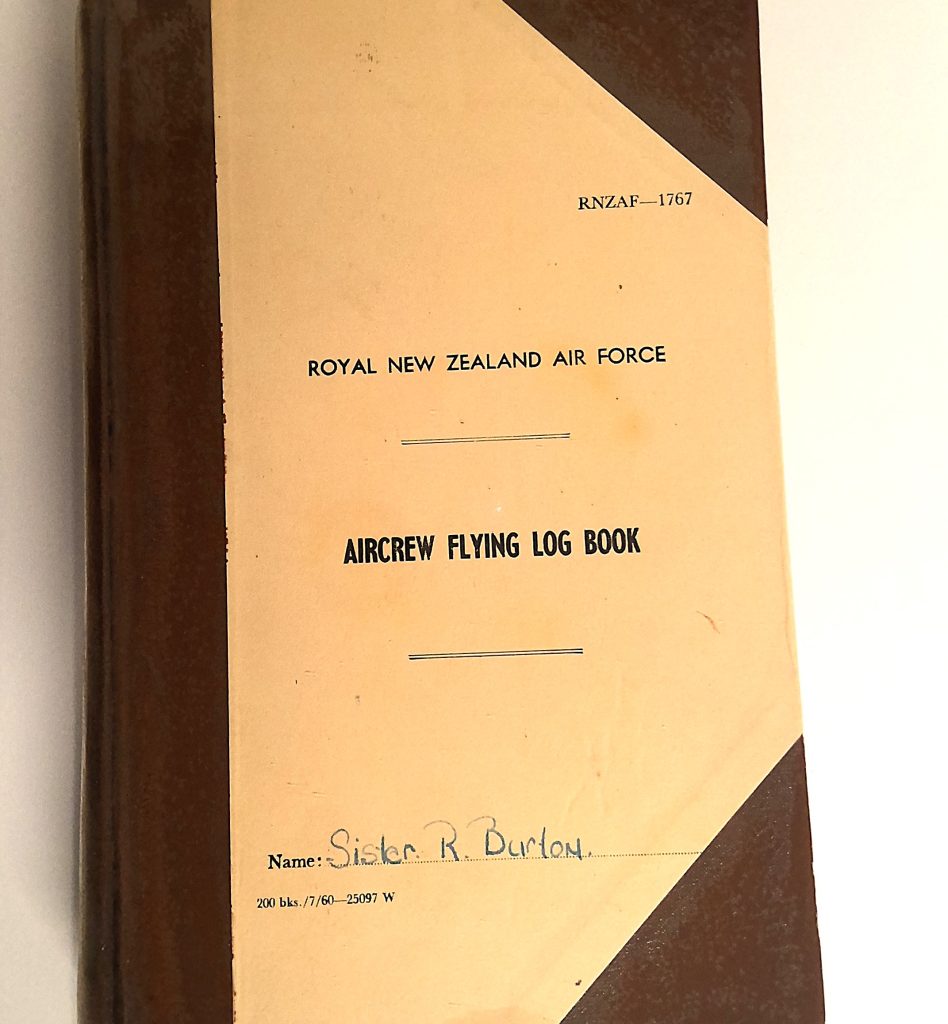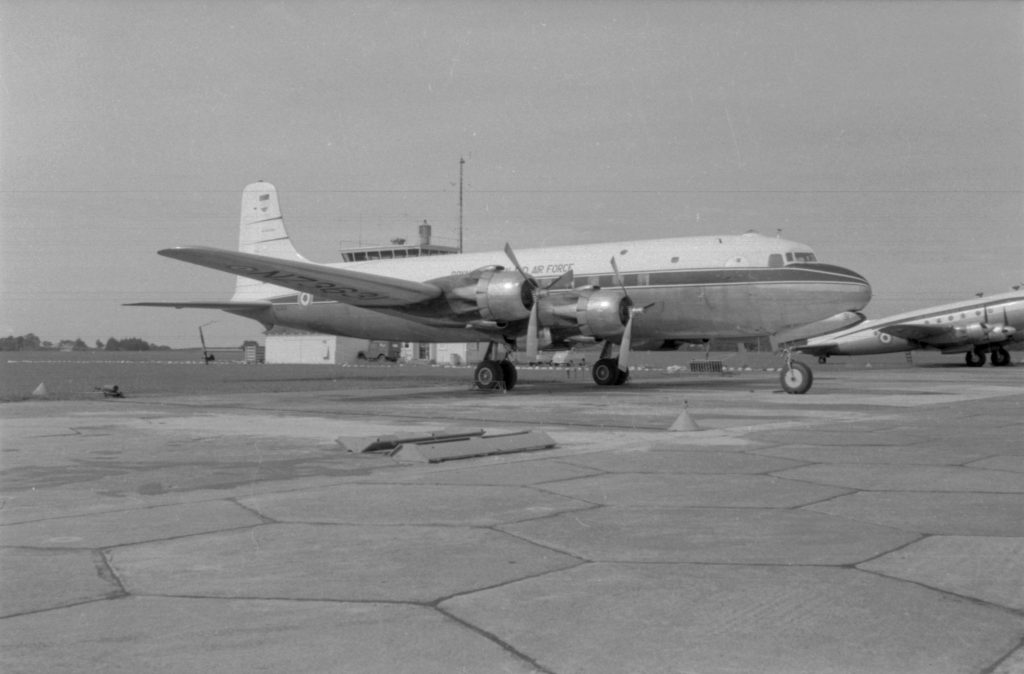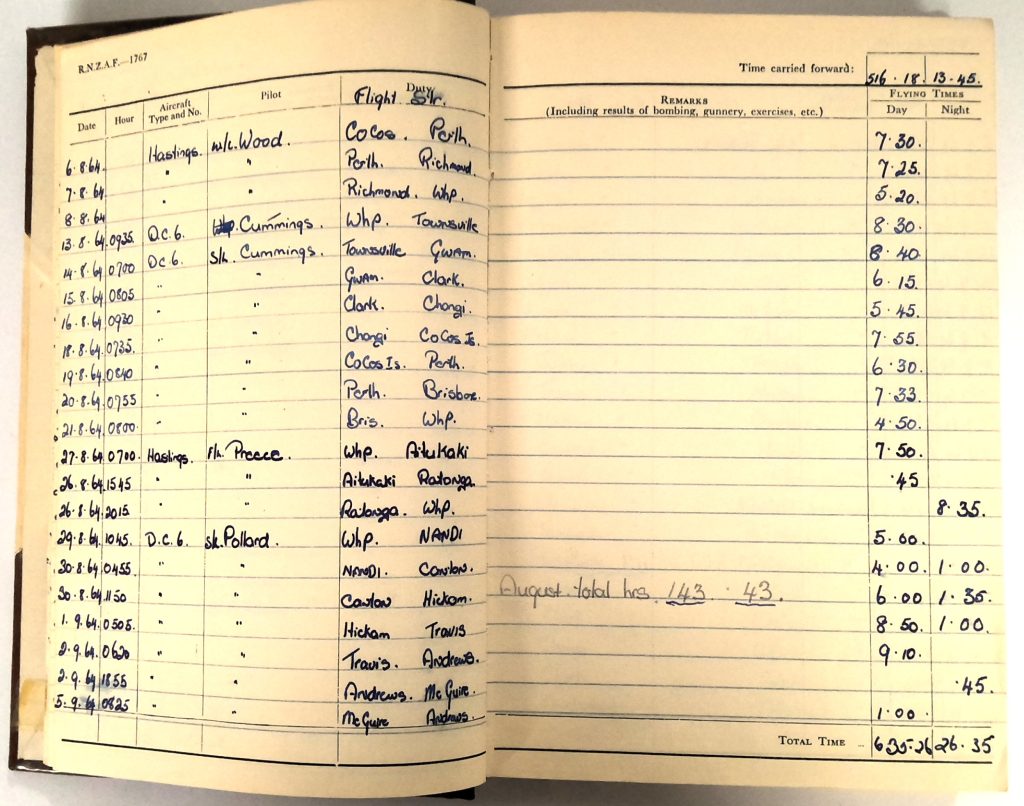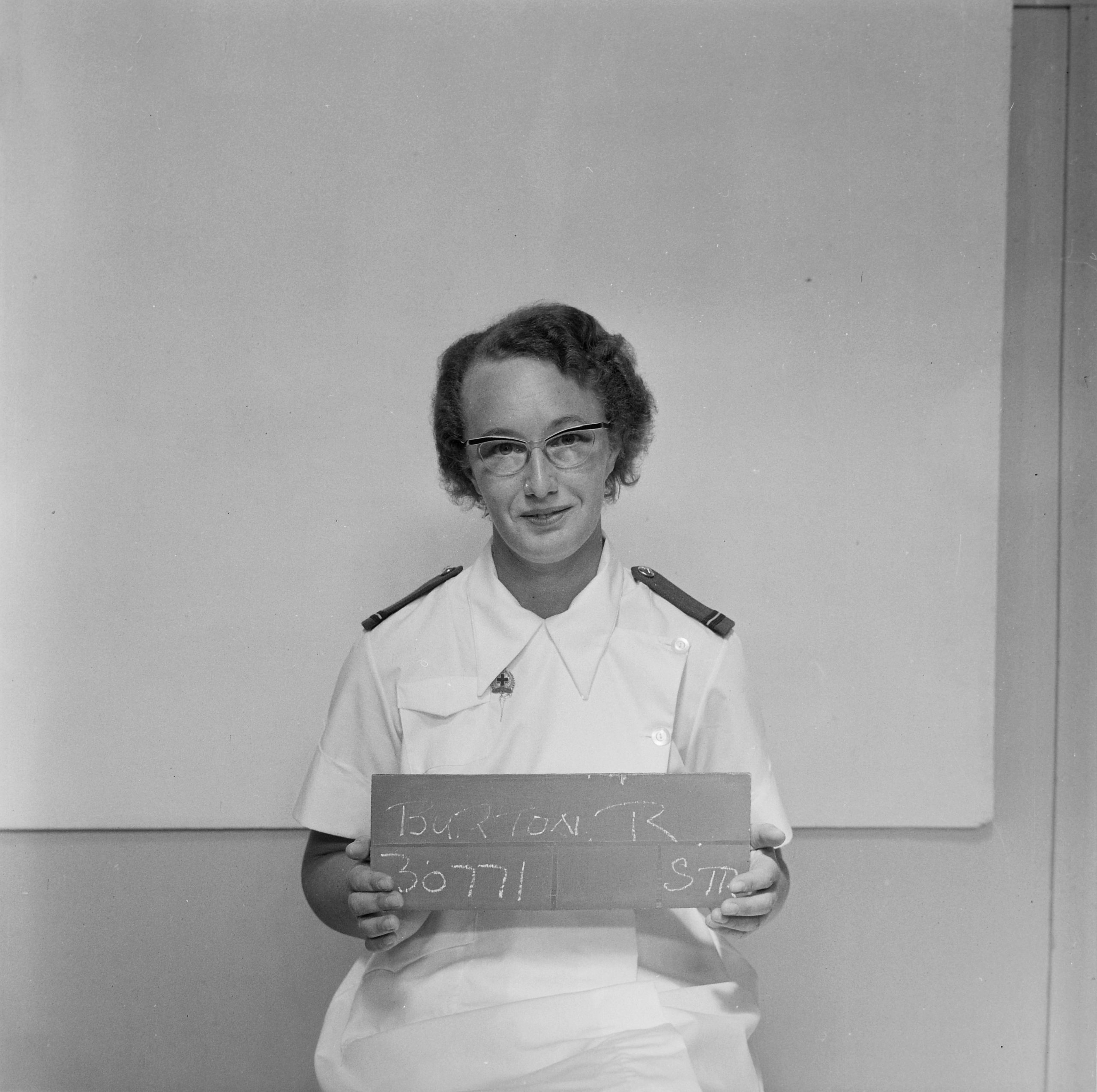Sometimes the museum receives objects which hold stories yet to be discovered.
Earlier this year the museum received an unusual log book into the collection, discovered in a second-hand book shop in Whangarei.
It was a standard RNZAF Form 1767 Aircrew flying log book issued by the air force in the 1960s.
It had belonged to a Sister R. Burton.

It seemed to be a list of flights between 1963 and 1967 to far-flung places. So, what was a nurse doing on these flights? This was a job for the Research Team.
The 1960s were the glory days of the large passenger and transport leviathans of the RNZAF, the four-engine Douglas DC-6 and the Handley Page Hastings.
Nurses were routinely assigned to flights to provide medical cover and assistance, especially on long-haul flights. One of the pilots of No. 40 Squadron at this time was Flight Lieutenant Peter Adamson (later Air Vice-Marshal and Chief of Air Staff). He is the chairman of the Museum Trust Board and so we asked him about Sister Burton.
He found Sister Burton listed in his log books for the same period as one might expect. He explained:
“The nursing officers were never posted to 40 Squadron, they were either on the strength of the station hospital or seconded to it from elsewhere for the experience. I rather think Ruth was one of those in the latter category who were held supernumerary at the hospital for a limited time for flight duties.”
Meanwhile, a visiting researcher and New Zealand military nursing expert, Dr Wendy Maddocks, had visited our reading room.
We asked if there was any way we could properly identify this nurse. Within days, she emailed us with the name Sister Ruth Ellen Burton. She was a member of the Royal New Zealand Nursing Corps (RNZC). The mystery was now unravelling.
The next step was to try and make sense of all the flights and locations she visited.
This was done by cross referencing her log book with the Unit History, Flight Authorisation Books and a few other archival sources.
We also found her Wigram identity card photograph which revealed her service number as 30771. So now, we had a face for the name. Most of her flights were routine, or there exists little detail, but a few were particularly interesting.

Sister Ruth Burton’s first major operational flights were associated with Operation Tiger Balm II in 1963, and she flew on several DC-6 aircraft as Flight Sister trooping personnel out to South-East Asia via Australia and back. These sorts of flights were routine for No. 40 Squadron at this time.
From time to time, No. 40 Squadron was called upon to carry out ‘mercy missions’ to the Pacific Islands, to assist with medical emergencies and evacuations. August 1964 was unusual as two requests from the Cook Islands were received in that month. Sister Burton was involved in the second at very short notice. The Unit History takes up the story:
“A further call for medical assistance in the Cook Islands was received during the evening of 26 August, resulting in the disruption of a pleasant Ladies Dining-In Night which was then in progress. As a result, Flt Lt M.C. Preece and crew departed the following morning to uplift a tetanus victim from Aitalaki and a patient suffering from jaundice from Rarotonga. At Rarotonga a goose neck flare path was used for take-off for only the second time in the airfield’s history. Continuous use of a hand respirator was needed on the tetanus patient during the return flight. Sister Ruth Burton shared this demanding task with two doctors from the Green Lane Hospital who had come along to care for the patient”.

The return flight took over eight and a half hours. The Captain of Hastings NZ5803, Merle Preece recalled many years later when interviewed by a Burnside High School Student:
“And so I took off at six ’o clock in the morning and I landed back at six o; clock the next morning and we hadn’t been to bed, but I went to Rarotonga, refuelled and then went to Aitutaki and picked up this guy with lock jaw (tetanus) who was paralysed with the drug curare. I had two doctors and a couple of nurses from Auckland hospital and they had to pump him with an air bladder the whole way home as we didn’t have an oxygen set up.’’
In fact, Ruth Burton was the only nurse on that flight.
The longest flight made by Ruth Burton was to the UK just days after her mercy mission to the Cook Islands. She joined Squadron Leader D.B. Pollard DFC and his crew on DC-6 NZ3631 conveying the Chief of Air Staff Air Vice-Marshal Ian Morrison to Britain. VIP flights were not uncommon, but this was the most notable we could identify from the sources that included Sister Burton.

By January 1965, her time with No. 40 Squadron was coming to an end. Her last flight was a ‘Raro Special’ in Hastings NZ5803 once again, on 28 January 1965.

This time the crew under Flight Lieutenant Cliff Jenks and Flight Lieutenant Smith were to pick up children from Rarotonga attending school in New Zealand after having their holidays at home in the Cook Islands. So, her last flight would involve looking after an aeroplane full of children!
During her time with No. 40 Squadron she had amassed over 1000 hours of flying.
This was not the end of Sister Burton’s flying career. Just a week later, she flew by Bristol Freighter to Wigram.
Based at Wigram, she flew numerous flights in de Havilland Devons as Flight Sister to destinations in New Zealand up to December 1966.
Her final flight was a joyride around Christchurch in a Harvard on 16 March 1967.
On 26 May 1967, the New Zealand Gazette printed that Temporary Charge Sister Ruth Burton would cease to be attached to the RNZAF. She passed to the Reserve of Officers on 1 July 1969.
How the log book ended up in a second hand bookshop in Whangarei remains a mystery.
But it is now preserved in the museum archives as a permanent reminder of the nurses who served on these long-distance flights around the world during the 1960s.




